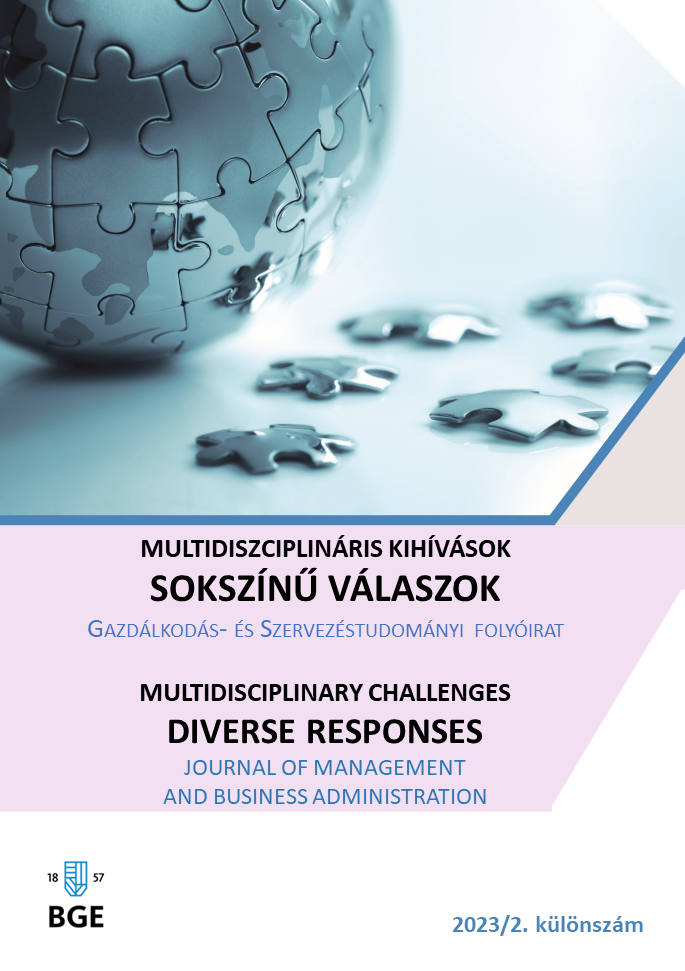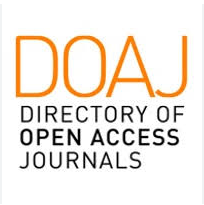Measurement of employee satisfaction in open office environment at NCH
Abstract
The use of human resource is essential in achieving goals set by the company. Research made on measurement of employee satisfaction in new open office environment at NCH company, because based on management decision the European offices are going to be refurbished. Thus, the Hungarian office must also be transformed into an open office area. The goal of my research is to measure employee satisfaction and make a proposal for management team for further office investments. The topic is relevant, because the Hungarian managing director has shared the experience and evaluation related to office refurbishment project.
First, the office investment will be presented which will be followed by secondary research made on open office literature. Finally, the findings of the in-depth interviews carried out with Hungarian and Czech employees regarding their satisfaction will be introduced.
Results show that Hungarian and Czech employees are satisfied with their working environment in general. Despite an overall satisfaction, employees shared their need for wider space and extended personal workspace, also they complained about excessive noise and their wish for more meeting rooms and rest zones. In their evaluation modern and lockable furniture is thought to be a great advantage. In addition, they noticed a more direct and quick communication between each other in their operation.
Based on the study conducted in both organizations I propose the setting up of project team, then to construct additional open offices in future European office developments. It is important to build locker space for functional leaders. Rest zones also have a key role. Emphasis should be on comfortable furniture, which can be used variedly in case of office rearrangements. In order to reduce noise, it is necessary to find local solutions according to local conditions.
References
Adamcsik, J., 1998. Irodaautomatizálás. Budapest, Indok Bt.
Baker, K. A., 2008. Organizational communication. In: Catalytic Conversations: Organizational Communication and Innovation, M. E. Sharpe. www.au.af.mil/au/awc/awcgate/doe/benchmark/ch13.pdf (2020.02.03.)
Bernstein E. S. & Turban S., 2018. The impact of the ‘open’ workspace on human collaboration „Philosophical Transactions of the Royal Society B”. B3732017023920170239 http://doi.org/10.1098/rstb.2017.0239
Bernstein E. & Waber, B., 2019. The Truth About Open Offices. Harvard Business Review, November–December 2019 https://hbr.org/2019/11/the-truth-about-open-offices
Barnkopf, Zs., 2002. A kommunikáció könyve. Flaccus Kiadó, Budapest.
Csepeli, Gy., 2003. Szociálpszichológia. Osiris, Budapest.
Csoma, O. Z., 2017. Munkakörnyezet és generációk. Szakdolgozat, Miskolci Egyetem, Gazdaságtudományi Kar.
De Croon, E., Sluiter, J., Kuijer, P. P. F. M. & Frings-Dresen, M. H. W., 2005. The effect of office concept on worker health and performance: A systematic review of the literature. Ergonomics, 48 (2), 119-134.
Desor, J. A., 1972. Toward a psychological theory of crowding. Journal of Personality and Social Psychology, 21, 79-83.
Digital Hungary, 2019. https://www.digitalhungary.hu/e-volution/Az-open-office-aldas-vagy-atok-avagy-nyilt-legteru-vagy-zart-legyen-az-irodank/8626/ (2019.12.10.)
Dobay, P., 1996. Az iroda. Emberek, gépek, szervezet. Panem, Budapest.
Dúll, A., & Tauszik, K., 2006. A munkahelyhez kötődés konstruktumának vizsgálata – elméleti megfontolások egy tranzakcionális helykutatáshoz. Akadémiai Kiadó, Budapest. 87–105., 90.
Eurostat, 2019. How usual is it to work from home? https://ec.europa.eu/eurostat/web/products-eurostat-news/-/DDN-20200424-1?inheritRedirect=true&redirect=%2Feurostat%2Fnews%2Fwhats-new (2020.04.24.)
Farkas, T., 2012. Az iroda története. https://bit.ly/2G5Rxaz (2019.12.10.)
Fehérvári, Á. & Szeles, P., 2001. A vállalat belső kommunikációja. Munkaügyi Szemle, 45(11), 17-21.
Gensler Study, 2013. US Workplace Survey. https://bit.ly/2JrN3f9 (2020.02.02.)
Gerlitz, A., & Hülsbeck, M., 2023. The productivity tax of new office concepts: a comparative review of open-plan offices, activity-based working, and single-office concepts. Management Review Quarterly https://doi.org/10.1007/s11301-022-00316-2
Gjerland, A., Søiland, E., & Thuen, F., 2019. Office concepts: A scoping review, Building and Environment, 163, 106294, https://doi.org/10.1016/j.buildenv.2019.106294
Hervie, D. M., Amoako-Atta, E., Hossain, M.B., Illés, C.B., & Dunay, A., 2022. Impact of COVID-19 Pandemic on Hotel Employees in the Greater Accra Region of Ghana. Sustainability, 14, 2509. https://doi.org/10.3390/su14052509
Illés, B. Cs., Hurta, H., Dunay, A., 2021. Francia érdekeltségű vállalkozások működésének kihívásai Magyarországon. In: Blahó, A., Czakó, E., Poór, J. (szerk.) Nemzetközi menedzsment. pp. 479-488 Akadémiai Kiadó, Budapest.
James, O., Delfabbro, P. & King, D. L., 2021. A Comparison of Psychological and Work Outcomes in Open-Plan and Cellular Office Designs: A Systematic Review. SAGE Open, 11(1). https://doi.org/10.1177/2158244020988869
Klein, S., 2012. Vezetés-és szervezetpszichológia. Budapest, EDGE 2000 Kft.
Klein, S., 2018. Munkapszichológia a 21. században. Budapest, EDGE 2000 Kft.
Laurence, G. A., Fried, Y. & Slowik, L. H., 2013. Moderated mediation model of the effect of architectural and experienced privacy and workspace personalization on emotional exhaustion at work. Journal of Environmental Psychology, 36, 144-152.
Marciniak, R., Móricz, P., & Baksa M., 2020. Digitális transzformáció a magyar üzleti szolgáltató központokban. Multidiszciplináris kihívások, sokszínű válaszok - Gazdálkodás- és Szervezéstudományi folyóirat, (2) 116-139. https://doi.org/10.33565/MKSV.2020.02.07
NCH Europe, 2019. NCH bemutatkozás https://www.ncheurope.com/who-we-are (2019.11.30.)
Oldham, G. R. & Fried, Y., 1987. Employee reactions to workplace characteristics. Journal of Applied Psychology, 72 (1), 75-85.
Project Management Institute, 2020. Projektmenedzsment útmutató. Budapest, Akadémiai Kiadó. DOI: 10.1556/9789634545019 https://mersz.hu/hivatkozas/m663pmbok6_679_p1#m663pmbok6_679_p1 (2020.02.06.)
Rekettye, G., 2018. Értékteremtés 4.0. [Digitális kiadás.] Budapest: Akadémiai Kiadó. DOI: 10.1556/9789634542230 https://mersz.hu/hivatkozas/dj336et_82_p6#dj336et_82_p6 (2019.12.27.)
Roelofsen, P., 2008. Performance loss in open‐plan offices due to noise by speech, Journal of Facilities Management, Vol. 6 No. 3, pp. 202-211. https://doi.org/10.1108/14725960810885970
Sailer, K., & Thomas, M., 2021. Socio-spatial perspectives on open-plan versus cellular offices, Journal of Managerial Psychology, 36 (4), pp. 382-399. https://doi.org/10.1108/JMP-10-2019-0556
Samani S.A., & Alavi S. M. S. Z., 2020. Are Open‐Plan Office Designs Still Popular After Coronavirus Pandemic? Performance Improvement. 59(8):24–32. https://doi.org/10.1002/pfi.21931
Sander, E., Marques, C., Birt, J., Stead, M., & Baumann, O. (2021). Open-plan office noise is stressful: Multimodal stress detection in a simulated work environment. Journal of Management & Organization, 27(6), 1021-1037. https://doi.org/10.1017/jmo.2021.17
Triplett, N., 1981. A kísérleti társadalomlélektan főárama. Gondolat Könyvkiadó, Budapest.
Yildirim, K., Akalin-Baskaya, A., & Celebi, M., 2007. The effects of window proximity, partition height, and gender on perceptions of open-plan offices. Journal of Environmental Psychology, 27, 154-165.


























